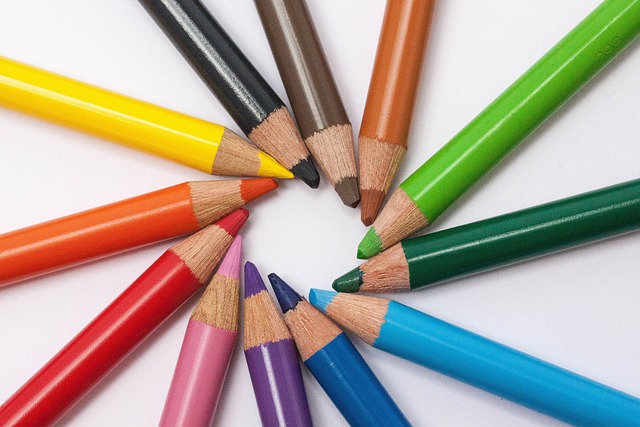Graphic design is a dynamic creative process combining conceptualization, typography, imagery, color, and layout across various mediums. Historically shifting from traditional print media to digital innovation, today's designers use industry-standard software like Adobe Creative Suite for both print (layout, typography, color) and digital (responsive design, animation) projects. Case studies illustrate real-world applications, while emerging technologies like AI, responsive design, sustainability, AR, and VR shape the future of graphic design by demanding creativity, technical skill, and adaptability.
“Explore the dynamic world of Graphic Design with our comprehensive guide, covering both traditional print and cutting-edge digital realms. From understanding the fundamentals to deciphering evolving trends, this article offers a deep dive into the art and science of graphic design.
We’ll trace the evolution of graphic design, highlighting the seamless transition from print media to the digital landscape. Discover essential tools and software shaping modern creativity, and unlock strategies for impactful visual communication across diverse platforms. Join us as we navigate through case studies, future projections, and the endless possibilities within the realm of graphic design.”
Understanding Graphic Design: A Comprehensive Overview

Graphic design is a multifaceted creative process that involves conceptualizing and creating visual content to communicate messages effectively. It’s an art that bridges the gap between ideas and their visual representation, making complex information accessible and engaging. At its core, graphic design utilizes typography, imagery, color, and layout to craft visually appealing and meaningful designs across various mediums.
Whether it’s designing a captivating logo, creating layouts for print media like magazines or brochures, or crafting visually stunning websites, graphic designers play a pivotal role in shaping our visual landscape. They translate brand identities, convey stories, and evoke emotions through design elements, ensuring that the intended message resonates with the audience. Understanding graphic design encompasses grasping these principles and mastering tools and techniques to bring ideas to life in both print and digital formats.
The Evolution of Graphic Design: Print to Digital Transition

The evolution of graphic design has been a fascinating journey from traditional print media to the digital realm. In the early days, graphic designers primarily worked with physical materials like pens, brushes, and various printing techniques to create visually appealing art for books, newspapers, and advertisements. This era was characterized by meticulous craftsmanship and an emphasis on fine details. With the advent of computers in the mid-20th century, graphic design began its transformative shift. Designers embraced new tools and software that revolutionized their creative process. The transition from print to digital enabled designers to explore a vast array of possibilities—from vector graphics and digital illustration to complex layout designs and interactive media.
This digital revolution has not only expanded the creative horizons but also changed how we perceive and interact with visual content. Print design, though still relevant, now coexists alongside its digital counterpart, which offers unprecedented accessibility and reach. Graphic designers today can seamlessly work across multiple platforms, from designing captivating websites and mobile apps to crafting visually stunning digital advertisements that engage audiences worldwide. This evolution continues to shape the field, pushing creative boundaries and ensuring that graphic design remains a dynamic and essential aspect of our visual culture.
Essential Tools and Software for Modern Designers

In today’s digital landscape, graphic design has evolved to encompass a wide array of tools and software that empower creators to bring their visions to life with precision and creativity. Essential for modern designers is a blend of industry-standard applications tailored for various aspects of the design process, from concept creation to final output. For vector graphics and illustration, Adobe Illustrator stands as a cornerstone, allowing designers to craft intricate elements with flawless detail and flexibility for multiple media formats.
For photo editing and manipulation, Adobe Photoshop is indispensable. It offers a comprehensive suite of tools that enable designers to enhance, retouch, and transform visual content, ensuring every image is ready for print or digital deployment. Completing the Adobe triad, Adobe InDesign is crucial for layout design, enabling designers to orchestrate text and graphics with precision, making it ideal for creating visually stunning brochures, magazines, and books. Together, these tools form a robust foundation that supports both print and digital graphic design endeavors.
Visual Communication: Strategies for Effective Print and Digital Designs

In the realm of graphic design, visual communication is a powerful tool that transcends boundaries, enabling designers to convey messages and evoke emotions through both print and digital mediums. Effective graphic design involves strategic planning and a deep understanding of the target audience. For print designs, such as brochures, posters, or magazines, designers must consider layout, typography, and color schemes tailored for physical formats. This includes optimizing text readability, ensuring colors translate well on printing presses, and creating visually appealing compositions that capture the intended message.
In the digital realm, graphic design takes on a different dimension with websites, social media graphics, and interactive interfaces. Designers need to adapt their strategies to accommodate various screen sizes and devices. Responsive design principles become paramount, ensuring visuals remain clear and engaging across desktops, tablets, and mobile phones. Additionally, animation, interactivity, and micro-interactions can enhance user experiences, making digital graphic design a dynamic field where creativity meets functionality.
Case Studies: Successful Print and Digital Graphic Design Projects

Case studies are a powerful tool to showcase the impact and success of graphic design projects, whether in print or digital formats. By studying real-world examples, aspiring designers can gain valuable insights into the creative process, problem-solving techniques, and the overall outcomes that make a project stand out. These case studies often highlight unique challenges and innovative solutions, providing a clear understanding of how graphic design principles are applied to achieve specific goals.
For instance, a successful print design project might involve rebranding for a well-known company, where designers crafted a new visual identity that resonated with the target audience. In the digital realm, an engaging website redesign could boost user experience and conversions through strategic layout planning, captivating visuals, and intuitive navigation. These case studies not only inspire but also educate, allowing readers to appreciate the intricate work that goes into creating effective graphic design solutions.
Future Trends in Graphic Design: Staying Ahead of the Curve

The world of graphic design is constantly evolving, with new technologies and trends emerging that shape its future. Staying ahead of the curve is essential for designers to remain relevant and meet the changing demands of clients and audiences. One prominent trend in Graphic Design is the increasing integration of AI and machine learning tools, which automate repetitive tasks, enhance creativity, and enable designers to explore innovative visual possibilities. As digital platforms continue to grow, there’s a growing emphasis on responsive design that adapts seamlessly to various screen sizes and devices.
Additionally, sustainability has become a significant focus in the industry, with eco-friendly practices and materials gaining traction. Designers are increasingly expected to create print and digital solutions that minimize environmental impact. The rise of augmented reality (AR) and virtual reality (VR) also opens new avenues for immersive design experiences, blurring the lines between physical and digital worlds. These future trends in Graphic Design demand a blend of creativity, technical skill, and adaptability from designers, pushing them to continually evolve their craft.
